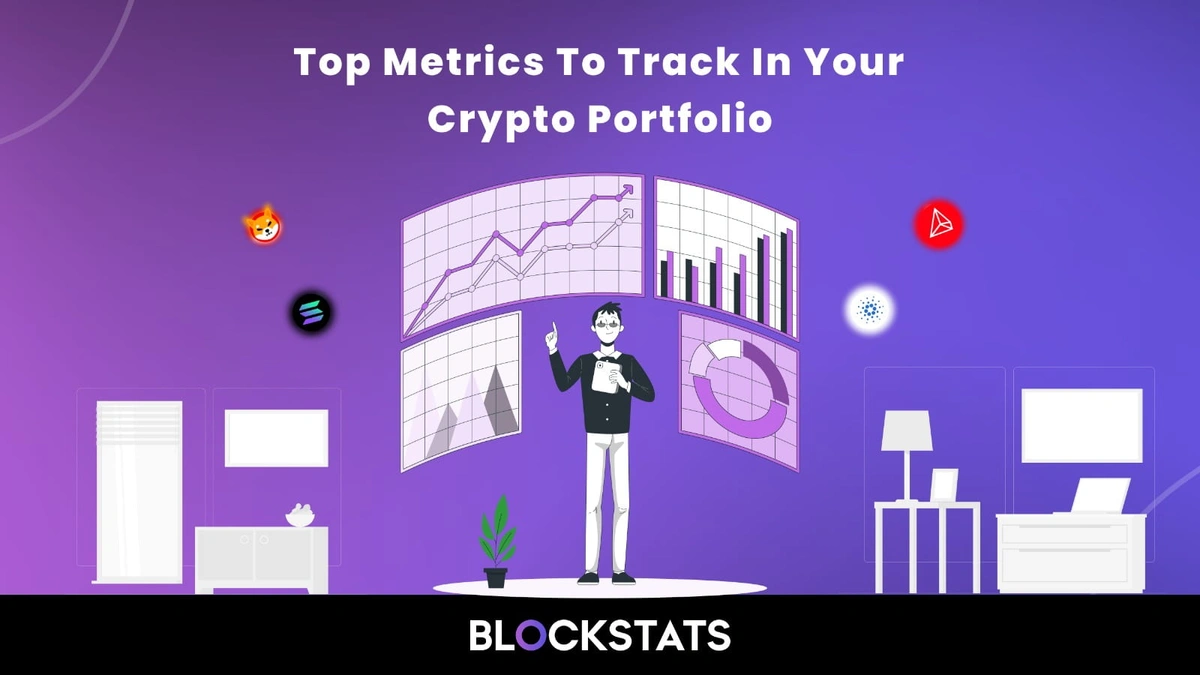Top Metrics to Track in Your Crypto Portfolio: A Crypto Investing…
The crypto market moves quickly, is volatile, and is full of opportunities — but only for those who monitor their investments closely. Simply buying and holding digital assets is not enough; to truly succeed in crypto, you need to track a range of performance and risk-related metrics. These metrics help you evaluate your portfolio’s health, optimize returns, and avoid big mistakes.
Below are the top crypto portfolio metrics every investor, beginner or advanced, should be tracking regularly.
1. Total Portfolio Value
What it is: The combined real-time market value of all your cryptocurrency holdings.
Why it matters: This gives you a high-level view of your wealth in crypto and lets you track performance over time. Watching daily, weekly, and monthly changes can help identify trends, wins, and warning signs.
Pro Tip: Use apps like Blockstats to view your portfolio value across multiple wallets and exchanges in one dashboard.
2. Asset Allocation
What it is: How your investments are distributed across different coins, tokens, sectors, and categories.
Why it matters: A diversified portfolio reduces the impact of a single asset crashing. Tracking allocation helps you stay balanced and avoid overexposure to risky coins or highly correlated assets.
Example: You might hold 40% Bitcoin, 25% Ethereum, 10% stablecoins, and 25% altcoins or DeFi tokens. This helps spread risk more effectively.
3. Profit and Loss (P&L)
What it is: The net result of your trades, broken into realized (completed) and unrealized (still holding) gains or losses.
Why it matters: Tracking P&L helps you understand which assets are performing well and which are dragging down your returns. It also prepares you for tax season.
Pro Tip: Review P&L for each asset individually to identify your strongest performers.
4. Cost Basis
What it is: The original purchase price (including fees) of your assets.
Why it matters: Knowing your accurate cost basis is essential for calculating profits and taxable gains. It helps you set accurate price targets and avoid panic-selling during dips.
Example: If you bought ETH at $1,800 and it is now $3,000, your unrealized gain is $1,200 per ETH.
5. Return on Investment (ROI)
What it is: Return on investment measures how much profit or loss you have made relative to your original investment.
Why it matters: It is a clear way to understand the efficiency of your investments and compare the performance of different assets.
Formula: ROI = (Current Value – Initial Investment) / Initial Investment x 100%
Pro Tip: Consider both realized and unrealized gains when assessing ROI to get a comprehensive view of your portfolio's performance.
6. Performance Over Time (Daily, Weekly, Monthly)
What it is: The rate of return or change in portfolio value over short and long time periods.
Why it matters: Regular trend tracking shows how market changes impact your portfolio and helps you time decisions like rebalancing or taking profits.
7. Volatility
What it is: A measure of how much a crypto asset’s price swings in a given time frame.
Why it matters: High volatility can mean greater opportunities but also higher risk. Knowing how volatile your assets are helps you manage emotional responses and adjust your portfolio stability.
Pro Tip: Use tools that track historical volatility for each asset. Also, monitor volatility to identify potential entry or exit points and to adjust your risk management strategies accordingly.
8. Liquidity of Assets
What it is: How quickly and easily an asset can be bought or sold without affecting its price significantly.
Why it matters: Some tokens may look profitable on paper but can be hard to sell without taking a loss due to price changes during the sale. Good liquidity means you can sell your investment smoothly when you need to.
9. Staking, Yield Farming, and Passive Earnings
What it is: Income earned from locking up tokens in staking platforms or DeFi protocols.
Why it matters: These rewards can significantly improve your total ROI. Tracking these earnings helps assess the additional returns on your crypto assets beyond capital appreciation.
10. Taxable Events
What it is: Any crypto activity that could trigger a tax obligation — like selling, converting, or earning crypto.
Why it matters: Properly tracking taxable events ensures compliance with local tax laws to avoid penalties and ensure accurate financial reporting. Tools like Blockstats automatically tag these events for reporting.
Invest with clarity & manage with confidence with Blockstats
Tracking your crypto portfolio is more than just checking prices. A well-monitored portfolio gives you insight into your financial health, reveals investment patterns, and helps you make smarter, more confident decisions.
By focusing on these key metrics, you will be better equipped to ride out market swings, capitalize on gains, and protect yourself from unnecessary risk — whether you are in it for the long term or actively trading. With Blockstats, you can monitor real-time portfolio metrics, automate tax reporting, and gain a 360° view of your crypto performance—all in one place.
Level up your crypto strategy with Blockstats. Try Blockstats for free today!
